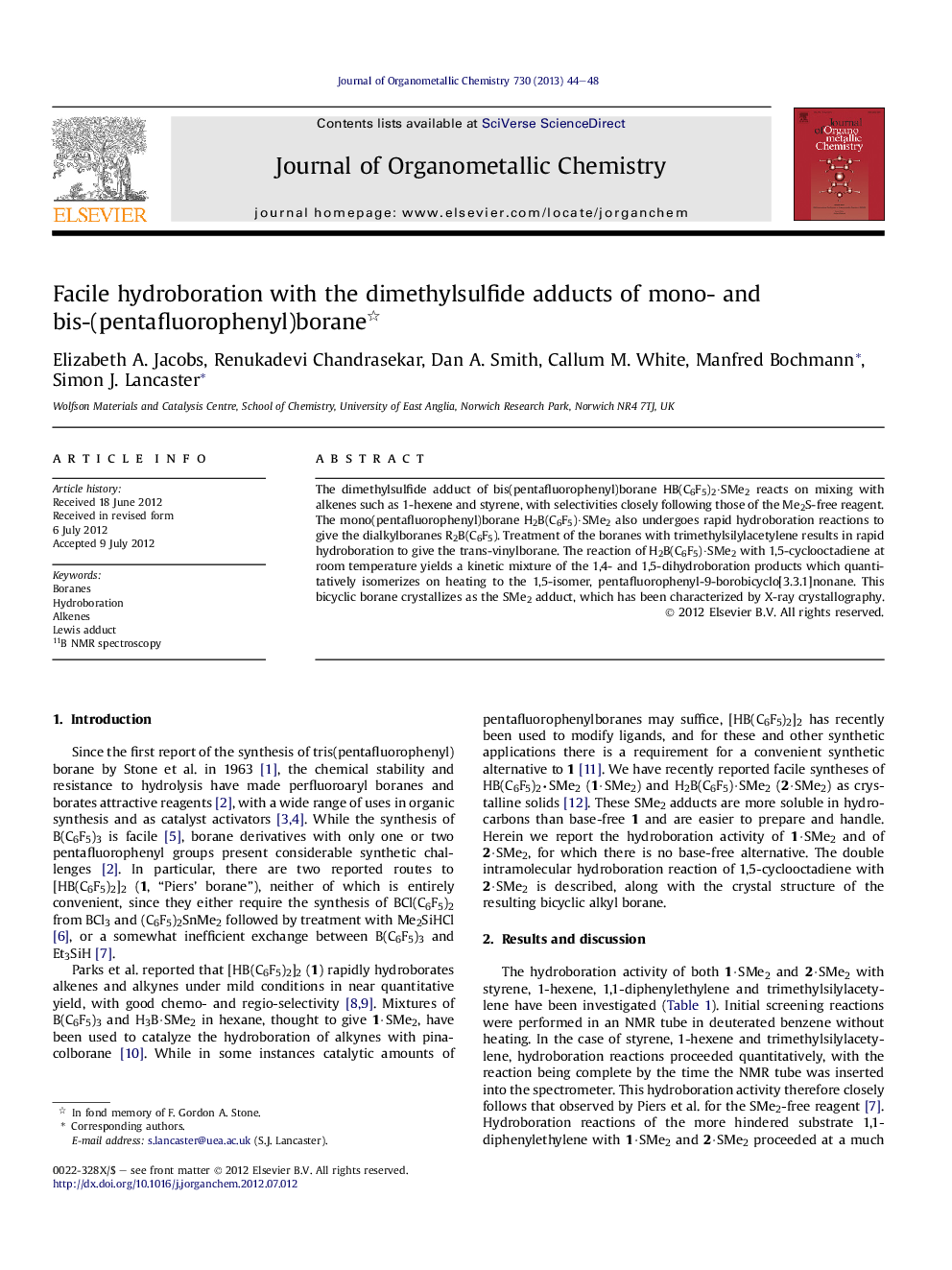| Article ID | Journal | Published Year | Pages | File Type |
|---|---|---|---|---|
| 1322817 | Journal of Organometallic Chemistry | 2013 | 5 Pages |
The dimethylsulfide adduct of bis(pentafluorophenyl)borane HB(C6F5)2·SMe2 reacts on mixing with alkenes such as 1-hexene and styrene, with selectivities closely following those of the Me2S-free reagent. The mono(pentafluorophenyl)borane H2B(C6F5)·SMe2 also undergoes rapid hydroboration reactions to give the dialkylboranes R2B(C6F5). Treatment of the boranes with trimethylsilylacetylene results in rapid hydroboration to give the trans-vinylborane. The reaction of H2B(C6F5)·SMe2 with 1,5-cyclooctadiene at room temperature yields a kinetic mixture of the 1,4- and 1,5-dihydroboration products which quantitatively isomerizes on heating to the 1,5-isomer, pentafluorophenyl-9-borobicyclo[3.3.1]nonane. This bicyclic borane crystallizes as the SMe2 adduct, which has been characterized by X-ray crystallography.
Graphical abstractThe dimethyl sulfide adducts of mono- and bis-(pentafluorophenyl)boranes are readily prepared and undergo rapid hydroboration with a range of unsaturated substrates.Figure optionsDownload full-size imageDownload as PowerPoint slideHighlights► Mono- and bis-(pentafluorophenyl)boranes can be prepared as Me2S adducts. ► H2B(C6F5)·SMe2 and HB(C6F5)2·SMe2 undergo hydroboration reactions. ► The reaction of H2B(C6F5)·SMe2 and 1,5-COD yields the borobicyclononane.
